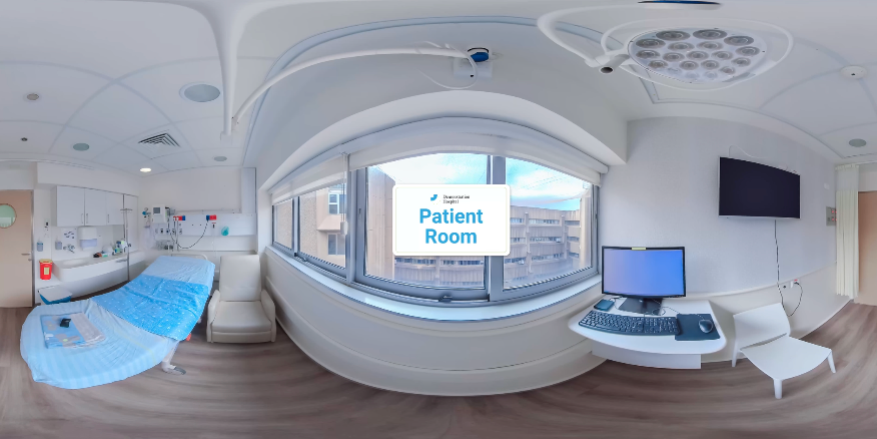Shooting Better Green Screen Video for Holotwins
Using a green screen can be a fantastic tool for video production, but it requires attention to detail to ensure the best possible results. There are...
Description of Holotwins
Description of Portals
Description of Things
Description of Games
Marketing Agencies
Printing & Graphic Design
Sports Teams
Dealerships
Direct Response Marketing
Digital Marketing
Paper-based marketing
Mailers
Fan Engagement
Education
Sales Enablement

Augmented reality (AR) is a powerful tool that can be used to enhance your user experience. This technology has been around for decades, but it's only recently been refined enough to become widely used. Now you can use AR to make your app more engaging and useful than ever before! Here are ten ways you can use AR:
When it comes to user experience (UX), you want to make sure that your customers have a great time with your product. AR is a powerful tool that can expand and improve your UX, helping you create an immersive experience for your customers.
AR can be used to create an immersive experience for your customers by:
Using AR as an extension of the product – For example, if you have a product that has different features or modes, you could use AR to show these features/modes in context. This will allow users to get familiar with the product before they buy it and also help them understand how the different parts work together when they are actually using it.
Creating a unique experience – You could use AR as part of your marketing strategy so that individuals get more information about what they're buying before purchase. If someone is interested in purchasing something but wants more details about how it works, then giving them access through an app on their phone would give them exactly what they need without requiring any additional effort from the company making money off sales (which doesn't happen often).
Shareable content:
This is the best place to start when thinking about Augmented Reality. You can create any type of content and make it shareable, which means your audience can easily share that content on their social media platforms. The more people who share your AR content, the more you are reaching new audiences.
Links: Linking out to other websites or apps is a great way to show off what you have been working on in 3D and sharing with your users around the world!
Interactive content: If there is an interactive element on your page (i.e., click-and-drag), it's important not only for users' interaction but also for SEO purposes as well; if possible use HTML5 instead of Flash so that search engines will recognize this as part of the webpage and not something separate from it (which could cause problems for SEO).
Augmented reality - This refers specifically to adding digital elements onto physical spaces such as walls or floors using cameras mounted inside headsets like Microsoft Hololens where digital objects appear overlaid onto real world environments through live video feeds from cameras mounted above eye level.
Using augmented reality, you can engage with your customers on a whole new level. By giving them more information about your product or making it more accessible, AR allows you to better interact with the people who are interested in what you have to offer.
Personalization is a major trend in digital marketing. With the rise of user-generated content, companies are increasingly focused on building an experience that resonates with customers on a personal level. However, one of the biggest challenges faced by marketers is that they cannot always predict how their audience will react to products or services. To overcome this hurdle, they must incorporate personalization into their strategies.
AR provides marketers with an opportunity to do just that by allowing them to tailor experiences specifically for individual users based on information such as location and purchase history. This can be done through simple techniques like changing colors or fonts based on preferences identified through data analytics as well as more advanced methods like automatically serving different options depending on whether users prefer Coke over Pepsi or prefer red cars over blue ones (yes—the latter example really exists).
One of the most obvious ways to use AR is to educate your customers. Whether you're selling a product or service, your customers want to know more about what they're buying. If they can see how it works in their own hands, that's even better!
You can also use AR to train employees on the latest in-store technology or processes. It's much more engaging than watching someone talk on screen—and it makes them feel like important members of the team by giving them a task that requires creativity and problem solving skills.
This type of training could be used for internal purposes as well (e.g., new hires). You could even use it for yourself if you're looking for some extra practice before taking an exam or certification test (like those offered by Project Management Institute). The possibilities are almost endless!
Another way to implement this strategy would be through corporate training videos: take all those boring PowerPoint slides and make them come alive with motion graphics that explain complex ideas visually rather than verbally. This will help reinforce key concepts while getting across critical information quickly without losing attention spans along the way!
You can use AR to entertain. It is a fun new way of experiencing the world, and this includes playing games. You might not be able to play basketball on your couch, but you could play chess there and even have it set up so that pieces move almost by themselves. You may have noticed that some companies are trying to develop apps that allow people to meet in virtual spaces where they can interact with each other as if they were really there (for example, [Slack](https://slackhq.com/) has launched “Slack Spaces”). One company is even working on software that will let you play football against people around the world—and it will feel like you're running around in real life!
You can also use AR for experiences and storytelling: think about how cool it would be if someone could tell you a story through their phone's camera while pointing out details in the background of your room; or how cool would it be if someone could show you what their house looks like from inside? Imagine watching movies together with friends but instead of sharing just one screen between everyone, each person has their own screen showing whatever angle they want! All these new possibilities open up endless avenues for creativity and collaboration among virtual teams—and those aren't even all the ways we've found so far!
AR can be used to identify a specific product, person or location. It’s an excellent way for consumers to search for products in stores, as well as find people and places.
For example, you could use AR to locate the nearest Starbucks if you want caffeine in your life.
You can use AR to take a test drive of a car before you buy it. With AR, you can see how the car feels in real life and how it looks on the road. You can also view other cars that are parked next to it or even drive by in front of your home. This is especially useful if you’re looking for something unique, such as a classic car or sports car; since they’re so different from normal vehicles, they might be hard to visualize without being able to see them in person first.
AR works well with cars because it allows people who aren't familiar with certain brands or models (or even with vehicles at all) an opportunity to get an idea about what their experience would be like owning/using one.*
Play games.
Play with friends.
Play with pets.
Play with kids.
Play to enjoy the moment and make people smile, laugh, or think about something new for even a brief moment in time; maybe even a little longer if you’re lucky!
Whether you're a product manager, designer, or developer, you've likely heard of augmented reality (AR) as a powerful new tool that can expand and improve your user experience.
AR has the power to create a better user experience for your customers by improving their perception of your product or company—but only if it's used properly. Here are some ways to use AR wisely:
The future of AR is looking very bright. With the right technology, you can create a compelling experience for your customers. And with the right tools and resources, you can make that happen without breaking a sweat. Whether you’re an agency or a brand owner who wants to get into AR but doesn’t know where to start—or if you work in-house at any company wanting more engagement with customers—we hope this guide has given you some ideas on how to put AR into practice at your company!

Using a green screen can be a fantastic tool for video production, but it requires attention to detail to ensure the best possible results. There are...

RealityBLU is a leading builder of immersive marketing technologies that can transport engaging digital experiences into a consumer’s physical world...

With the rapid evolution of technology, healthcare has entered an era where accessibility, patient engagement, and experiential understanding are...